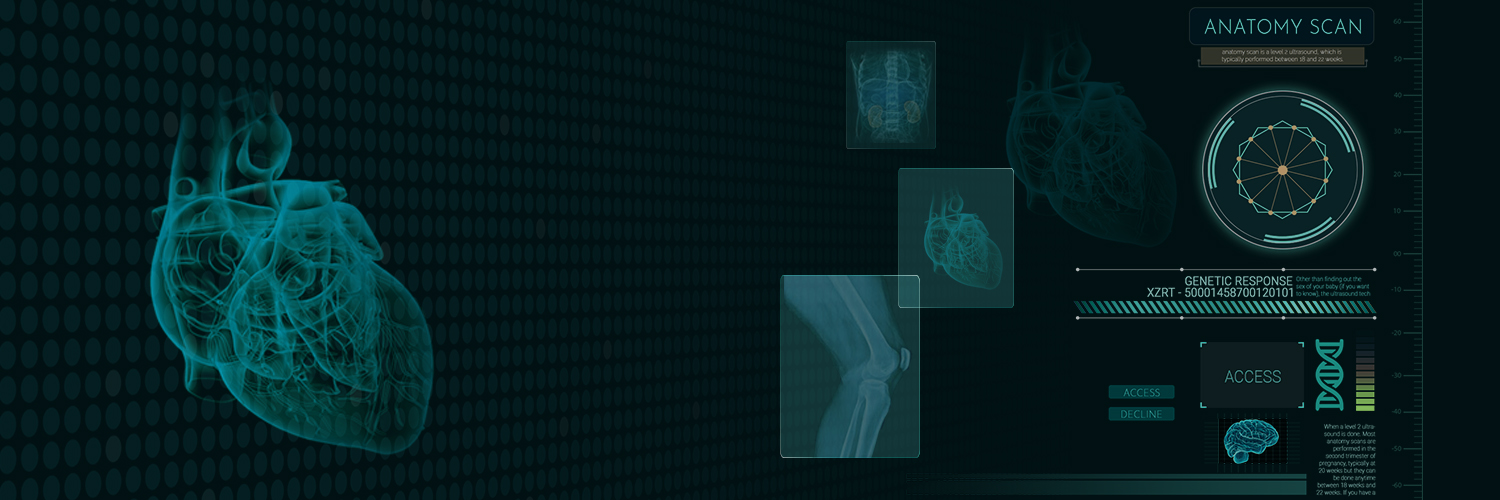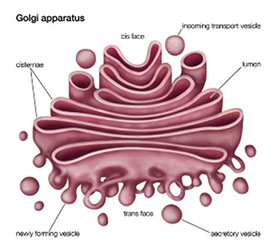
Ribosomes are dense, spherical and grannular particles which either occur freely in the matric (cytosol) or remain attached to the endoplasmic reticulum (RER).
Function. Ribosomes play an important part I the synthesis of proteins.
Golgi apparatus consists of a series of five to eight cup-shaped membrane-bounded, fluid-filled vesicles, vacuoles and flattened cisternae. Cisternae is a flattened membrane disk-shaped, stacked pouches that make up the Golgi apparatus. Cisternae are usually stacked together (placed one above the other) in parallel rows. Cisternae are formed at one end of the stack, called cis face of Golgi. A Golgi stack may contain three to twenty cisternae but generally, contains about six. However, in some unicellular flagellates, 60 cisternae combine to make up the Golgi apparatus.

The Golgi apparatus is the site at which the complex polysaccharides of the cell wall are synthesized in plant cells. Glycolipids and sphingomyelin are synthesized within the Golgi apparatus. The Golgi apparatus processes the broad range of cellular constituents that travel along the secretory pathway.
Animal cells generally contain 10-20 Golgi stacks per cell, which are linked into a single complex by tubular connections between cisternae. This complex is usually placed close to the cell nucleus and acts like a factory in which proteins received from the Endoplasmic Reticulum are further processed and sorted for transport to lysosomes, the plasma membrane or secretion.
1. Secretory: This is the main function of the Golgi apparatus. Golgi apparatus acts as a way-station or assembly area for the storage, processing and packaging of various cellular secretions. It packages materials synthesized in the cell and dispatches them either to intracellular targets such as plasma membrane and lysosomes or extracellular targets (e.g, zymogens)
2. Produce vacuoles or secretory vesicles: The golgi apparatus produces vacuoles or secretory vesicles which contain cellular secretions, e.g enzymes, proteins, cellulose, melanin pigment, lactoprotein of milk, etc.
3. Synthesis of cell wall, plasma membrane and lysosomes: It is also involved in the synthesis of cell wall, plasma membrane and lysosmomes.
Lysosomes are simple tiny spherical sac-like structures that are evenly distributed in the cytoplasm. Lysosomes are present in eukaryotic cells but not in prokaryotic cells. They are crucial cell organelles which release digestive enzymes powerful enough to break down food. The synthesis of these enzymes takes place in rough endoplasmic reticulum (RER) in the cell. They also act as a waste bin of the cell and keep it clean. The introduction of a foreign matter into the cell causes lysosomes to release enzymes which break the foreign substance into tiny pieces and kill them. They also remove the old and damaged or dead organelles from the cell and thus, protect the cell from further damages and consequences.
Lysosomes play a great role in immunity of the body. If a damaged or infected cell fails to do its functions due to metabolic irregularities or other reasons, the lysosomes inside a cell burst out and engulf their own cell. Thus, the other cells of the body are protected from further infections and damages. Lysosomes are known as “suicide bags” of a cell since they engulf their own cell.
1. Lysosomes serve as intracellular digestive system, hence, are called as digestive bags. They destroy any foreign material which enter the cell such as bacteria and virus. In this way protect the cells from bacterial infection.
2. Lysosomes also remove the worn out and poorly working cellular organelles by digesting them to make way for their new replacements. In this way, they remove the cell debris and are also known as demolition squads, scavengers and cellular housekeepers. hence, , lysosomes form a kind of garbage disposal system of the cell.
3. During the breakdown of cell structure, when the cell gets damaged, lysosomes may burst and the enzymes eat up their own cells. Therefore, lysosomes are also known as suicide bags of a cell.